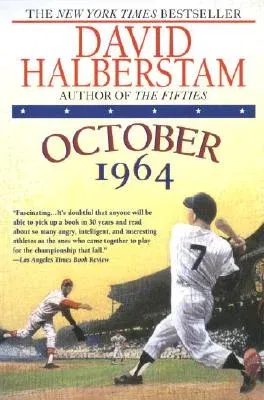In 1989 David Halberstam published "Summer of '49," which became a #1
"New York Times" bestseller. It was a compelling portrait of baseball in
an America as yet unchanged by affluence, technology, and social
progress. The players, almost all white, had been raised in harsh
circumstances, the games were played in the afternoon on grass and were
broadcast on radio, the teams traveled by train, and the owners had
dictatorial power over the players. Here also was the story of the
Yankees winning the first of their pennants under Casey Stengel before
going on to become baseball's greatest dynasty. "October 1964" is
Halberstam's exciting new book about baseball -- this time about the
last season of that Yankee dynasty. Like the previous book, it is both
sports and history, and it is a fascinating account of an electrifying
baseball championship against the background of profound social change.
The Yankees, like most American League teams, reflected the status quo
and, in contrast to the National League teams, had been slow to sign the
new great black players (indeed, for a time, their best scouts were
ordered not to sign them). Though the Yankees boasted such great names
as Mantle, Maris, and Ford, theirs was an aging team: Mantle, hobbled by
injuries, was facing his last hurrah in post-season play. By contrast,
the St. Louis Cardinals were a young tough team on the ascent, featuring
talented black players -- Bob Gibson, Curt Flood, Lou Brock, and Bill
White -- who were changing the very nature of the game with their
unprecedented speed and power. Halberstam has once again given us an
absorbing tale of an exciting season and a great Word Series that
reflected a changing era in bothbaseball and the rest of society as
well: The fabric that insulated baseball from the turmoil in the rest of
the country was beginning to tear. We get intimate vignettes not only of
the players but also of the scouts who signed them including the black
scouts who had been denied the chance.

